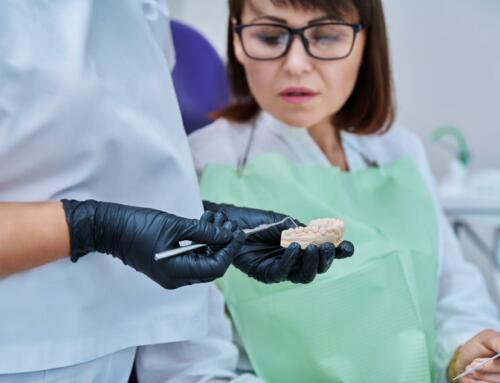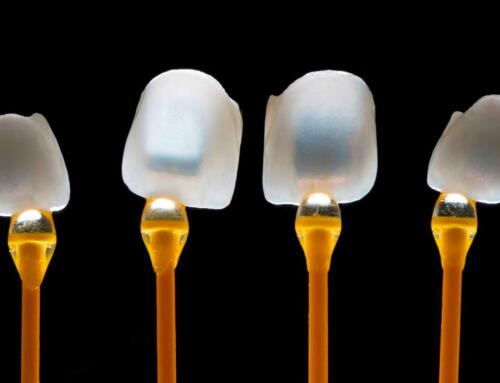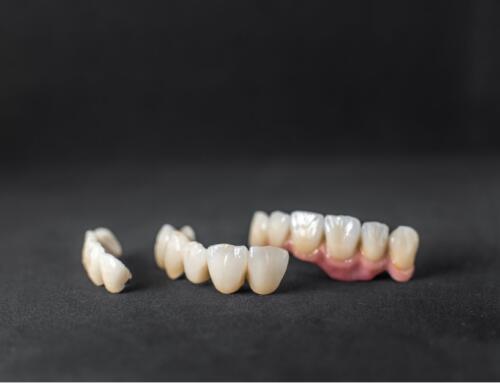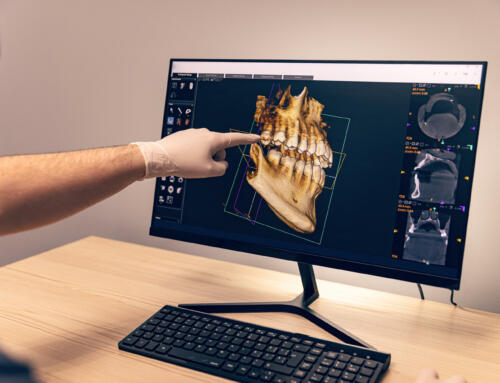
By David Hudnall, DMD
To dentists, implant placement and restoration have become a very common solution for replacing missing teeth. We forget that patients are often overwhelmed by the prospect of dental surgery and replacing one missing tooth or multiple because they don’t know what to expect. As a dental professional, it’s your job to manage patient expectations and guide them through the various dental implant healing stages so that conditions for a favorable outcome will occur.
While we are on the subject of surgical outcomes, it is also our job to screen patients properly before surgery. Performing implant surgery on patients with uncontrolled health conditions rarely produces a favorable outcome and often yields problems that are difficult for patients to understand and accept.
Dental Implant Healing Process
Let’s talk about the typical dental implant healing stages for most patients who undergo dental implant placement and what they might expect to experience. That way, you can better prepare your patients so they can understand while reducing the number of questions and telephone calls you receive from panicked patients after treatment.
Initial Symptoms
Minor discomfort, slight swelling, and bruising are all normal symptoms to expect after any surgical procedure. Since dental implant surgery is an invasive procedure that involves placing a foreign object into the body, clinicians depend upon the body’s natural defense system to heal itself for a successful surgical outcome. Since many patients have less than ideal hygiene, it is often a good idea to help that process along by prescribing antibiotics to minimize swelling and prevent bacteria from interfering with the healing process. Depending upon the complexity of the surgery, the patient’s general health, and overall pain tolerance, a pain reliever may be prescribed for a few days to manage any post-operative discomfort.
Osseointegration Process
Initial healing of the soft tissue usually occurs within the first few weeks following treatment. However, full integration of bone graft material or an implant within the surrounding bone occurs in stages that can take from four to six months, on average, to take place. This is when the body has accepted the foreign object and the graft or implant body becomes solid and stable within the bone.
The number of implants placed and each person’s unique condition will affect their healing and integration process. There’s no set recovery time for all implant patients since each patient’s unique oral condition will affect the surgery.
Individual tolerances and lifestyle choices greatly impact dental implant healing time. For example, smoking after surgery slows the healing process and decreases the chances for a long-term successful outcome. If the patient smokes, as referenced by a leading dental implant manufacturer, they should avoid smoking in the weeks before and following the procedure to improve their chances for complete implant integration.
Recovery Time
The majority of implant patients are comfortable resuming their normal routine the day following surgery. In fact, many patients report that they experienced less post-operative discomfort after implant surgery than with dental extractions. A soft diet is recommended for the first few days following surgery. Within seven to ten days, and certainly after suture removal, most patients should be back to their normal diet while waiting for osseointegration to take place. Most patients do not experience any specific symptoms as osseointegration progresses.
Common Patient Misconceptions

Patients receive a lot of misinformation about implants. Let’s dispel those rumors and untruths:
Dental implants are expensive.
The fact is that dental implant treatment saves money over the lifetime of the patient. Implants preserve the existing jawbone, and the treatment often lasts a lifetime. Implant treatment is also less aggressive than crown and bridgework placed on natural teeth, which requires removing sound tooth structure and replacement every 15 to 20 years.
Implants are restored in a single visit.
Many patients think that they can have dental implants placed and walk out with a full set of permanent replacement teeth at the end of the visit. The reality is quality dental care takes time, and the body takes time to progress through the dental implant healing stages after a bone grafting procedure.
Placing dental implants and loading them at full force immediately is like pouring the footings for your house and constructing the house without allowing the cement to harden properly. Rushing the process can be a recipe for disaster and detrimental for oral health.
Implant surgery takes a long time.
While the average dental implant surgery takes less than one hour, many other procedures must take place, both before and after the implant surgery, to prepare for implant placement in the ideal location and properly restore the case.
Implants are prone to failure.
Although implant surgery enjoys a greater than 95% success rate, no surgical procedure is a slam dunk. Implants and grafts fail for various reasons, and that is part of the risk that any patient must assume when electing to have surgery. How the patient cares for the surgical site in the weeks following surgery and beyond can greatly impact the implant success rate.
I never need to see the dentist again.
Patients often think that once they have dental implants, their days of returning to the dental office for routine care and maintenance are over. While implants usually last a lifetime, their longevity depends upon receiving maintenance at regular intervals. Much like an automobile – if you expect it to serve you for the long haul, you must take care of it with regular preventive maintenance.
Effective Patient Education

One of the key aspects of ensuring a successful dental implant procedure is effective patient education. Despite your best efforts to communicate post-operative instructions verbally, patients may not retain all the information due to the stress associated with the implant dentistry.
Providing written instructions to take home can significantly improve communication and enhance the likelihood of a favorable surgical outcome.
Written Instructions for Post-Operative Care

Written instructions should comprehensively address post-operative care and address specific patient concerns. These instructions serve as a valuable reference guide for patients as they navigate through the recovery period.
Key components of written instructions include:
Medication Management
- Clear guidance on medication usage, including pain relievers and antibiotics, should be provided.
- Instructions on how to manage any potential side effects of medications should be included.
Wound Care
- Detailed steps on how to care for the surgical site, including cleaning instructions and any recommended oral hygiene products, should be outlined.
- Guidance on what to do in case of bleeding or unusual discharge from the surgical site should be included.
Dietary Recommendations
- A list of recommended foods and beverages, especially during the initial recovery period when a soft diet is often advised, should be provided.
- Instructions on gradually transitioning back to a normal diet as healing progresses should be included.
Activity Restrictions
- Clear guidelines on activities to avoid, such as strenuous exercise or activities that may put pressure on the implant site, should be provided.
- Instructions on when it’s safe to resume normal activities should be included.
Guiding Patients Through Dental Implant Healing Stages

In addition to post-operative care instructions, it’s crucial to guide patients through the dental implant healing stages. Patients should be informed about what to expect during each stage of the healing process, including:
Immediate Post-Operative Period
Information about common symptoms immediately after surgery, such as mild discomfort, swelling, and bruising, should be provided.
Guidance on managing these symptoms and when to seek medical attention if symptoms worsen should be included.
Soft Tissue Healing
Explanation of the soft tissue healing phase, including how the gums and surrounding tissues will gradually heal and stabilize the implant, should be provided.
Information on maintaining oral hygiene during this phase to prevent infections should be included.
Osseointegration Phase
Explanation of the osseointegration process, during which the implant fuses with the surrounding bone, should be provided.
Guidance on dietary considerations and oral hygiene practices that support osseointegration should be included.
Recognizing Signs of Implant Failure
Patients should also be educated about the signs and symptoms of potential implant failure, which can happen with a single tooth implant or multiple. This empowers them to recognize warning signs early and seek prompt intervention. Signs of implant failure may include:
Increased Pain: Persistent or worsening pain around the implant site may indicate an issue.
Swelling: Swelling that increases over time or is accompanied by redness and warmth may indicate an infection.
Drainage: Any discharge, especially pus, from the surgical site should be reported to the dentist immediately.
Implant Mobility: If the implant feels loose or shifts position, it could be a sign of implant failure and requires immediate attention.
Providing comprehensive written instructions and guiding patients through the dental implant process and potential signs of implant failure, empowers patients to take an active role in their recovery and ensure optimal tooth extraction and implant outcomes.
Quicker Healing Time with Stomadent

A better surgical process leads to a speedier recovery time and happier patients. Let Stomadent Dental Laboratory be your partner for both pre-and post-surgical solutions. Surgical stents allow for exact positioning when multiple implants are placed simultaneously. Not only do stents speed the surgical process, but they also allow the ideal path of insertion to be created for future restorations.
Implant restorations have become a walking advertisement for your dental practice. Stomadent’s technicians use the latest CAD/CAM technology to design and fabricate the most precise-fitting aesthetic restorations possible, gaining patient confidence and making you look great in the eyes of your patients.
Trust Stomadent to be an extension of your dental practice!




![Hybrid Denture with Titanium Bar [Best Methods + Advantages]](https://stomadentlab.com/wp-content/uploads/2024/01/dental-prosthesis-on-dark-background-2023-11-27-05-06-28-utc-scaled-500x383.jpg)
![The Lucitone Denture Advantage [Best Practices + Advice]](https://stomadentlab.com/wp-content/uploads/2022/08/lucitone-promo-1-500x383.jpg)

![How to Remove Snap On Dentures [Expert Guidance]](https://stomadentlab.com/wp-content/uploads/2023/12/a-denture-in-a-glass-of-water-dental-prosthesis-c-2023-11-27-04-50-54-utc-scaled-500x383.jpg)




